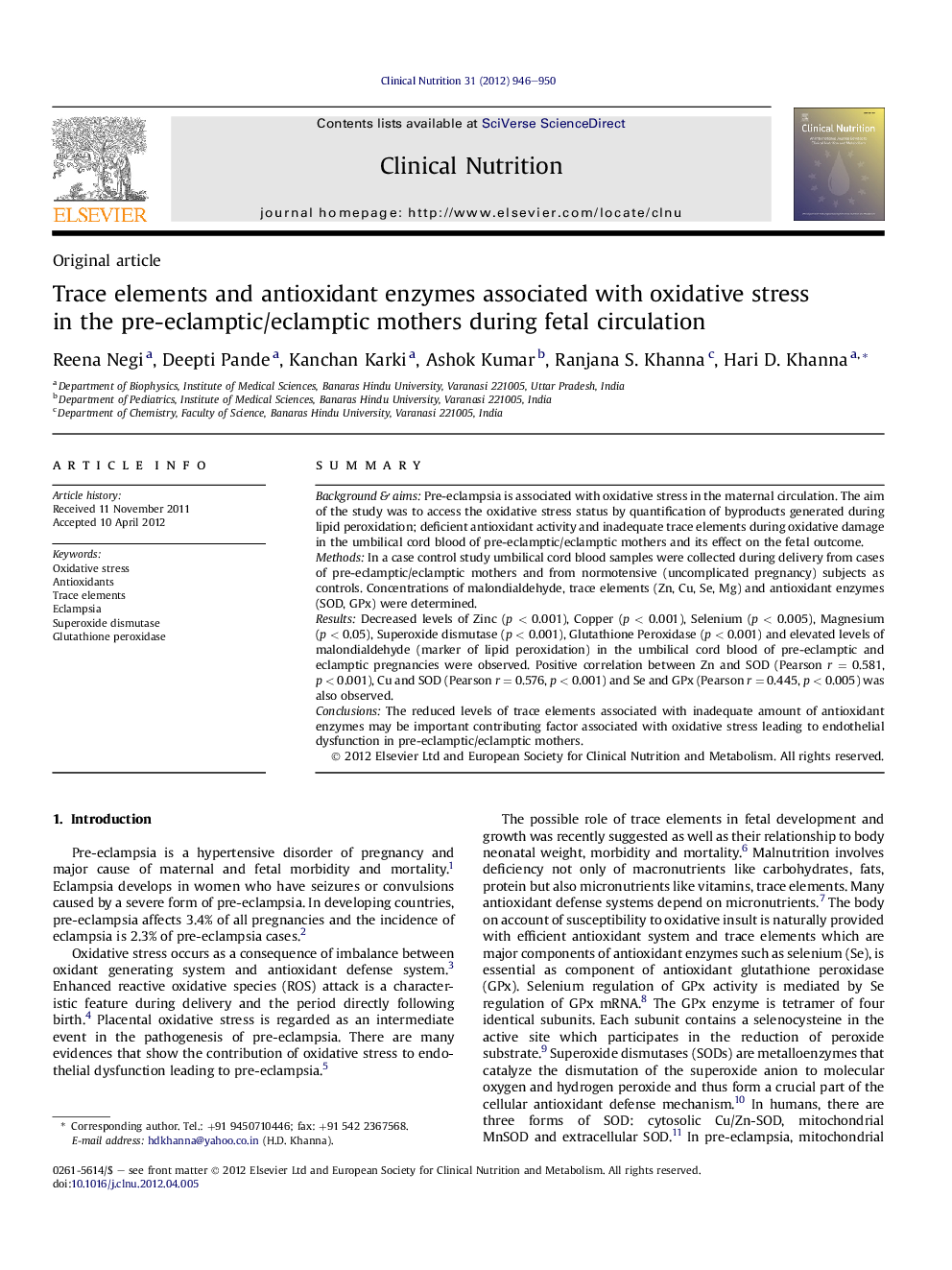| Article ID | Journal | Published Year | Pages | File Type |
|---|---|---|---|---|
| 2683027 | Clinical Nutrition | 2012 | 5 Pages |
SummaryBackground & aimsPre-eclampsia is associated with oxidative stress in the maternal circulation. The aim of the study was to access the oxidative stress status by quantification of byproducts generated during lipid peroxidation; deficient antioxidant activity and inadequate trace elements during oxidative damage in the umbilical cord blood of pre-eclamptic/eclamptic mothers and its effect on the fetal outcome.MethodsIn a case control study umbilical cord blood samples were collected during delivery from cases of pre-eclamptic/eclamptic mothers and from normotensive (uncomplicated pregnancy) subjects as controls. Concentrations of malondialdehyde, trace elements (Zn, Cu, Se, Mg) and antioxidant enzymes (SOD, GPx) were determined.ResultsDecreased levels of Zinc (p < 0.001), Copper (p < 0.001), Selenium (p < 0.005), Magnesium (p < 0.05), Superoxide dismutase (p < 0.001), Glutathione Peroxidase (p < 0.001) and elevated levels of malondialdehyde (marker of lipid peroxidation) in the umbilical cord blood of pre-eclamptic and eclamptic pregnancies were observed. Positive correlation between Zn and SOD (Pearson r = 0.581, p < 0.001), Cu and SOD (Pearson r = 0.576, p < 0.001) and Se and GPx (Pearson r = 0.445, p < 0.005) was also observed.ConclusionsThe reduced levels of trace elements associated with inadequate amount of antioxidant enzymes may be important contributing factor associated with oxidative stress leading to endothelial dysfunction in pre-eclamptic/eclamptic mothers.
